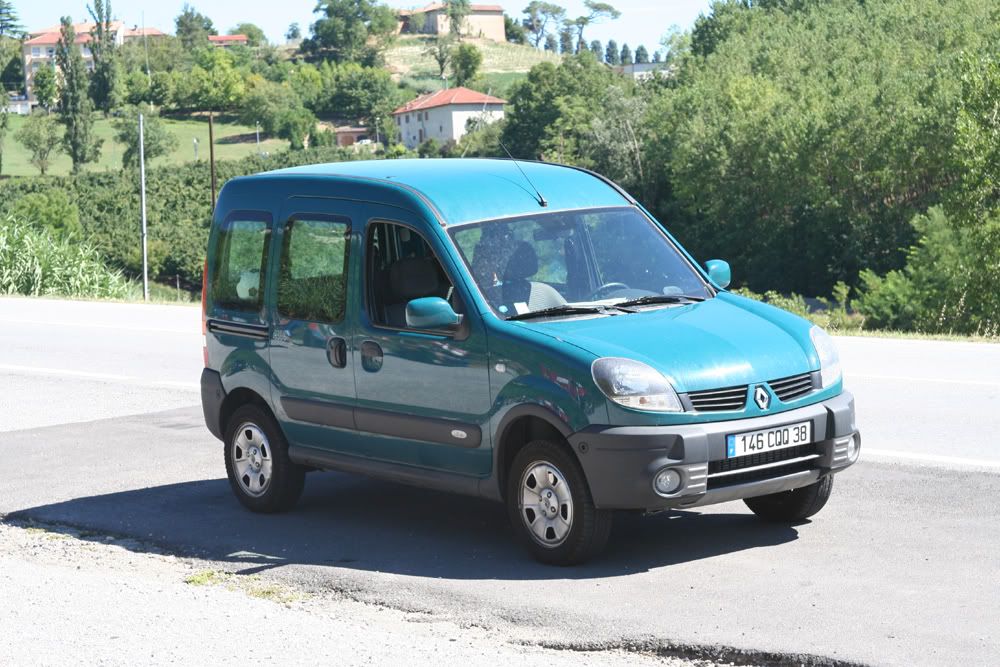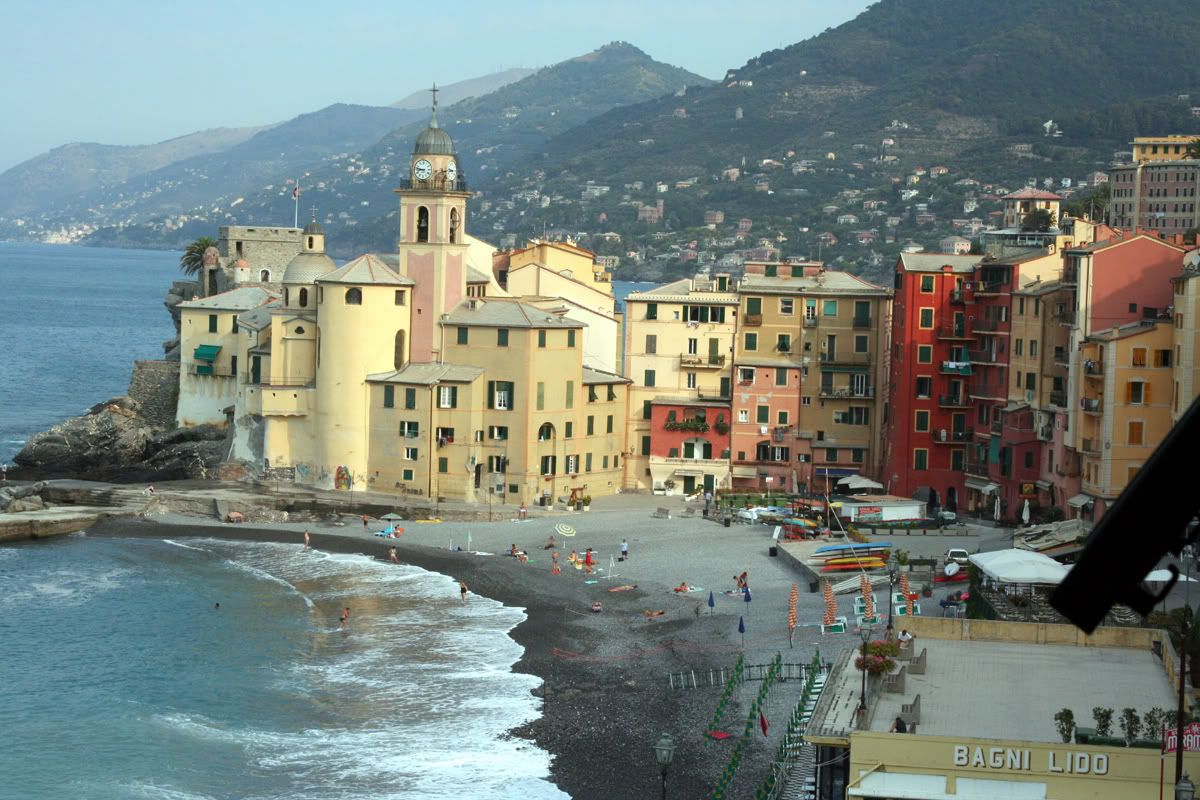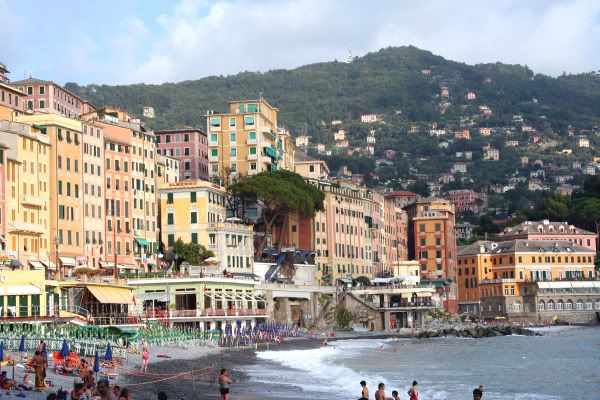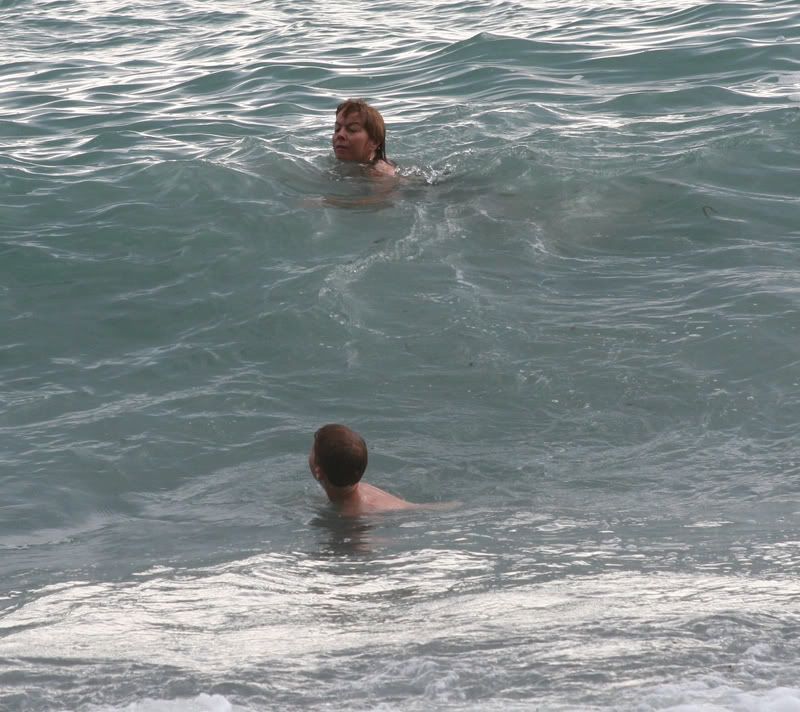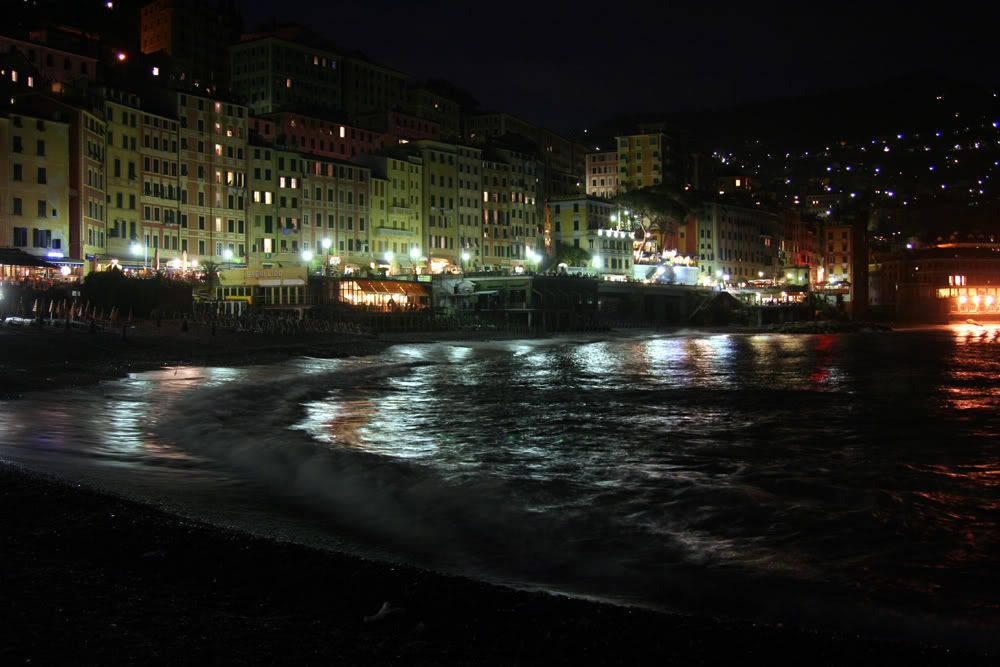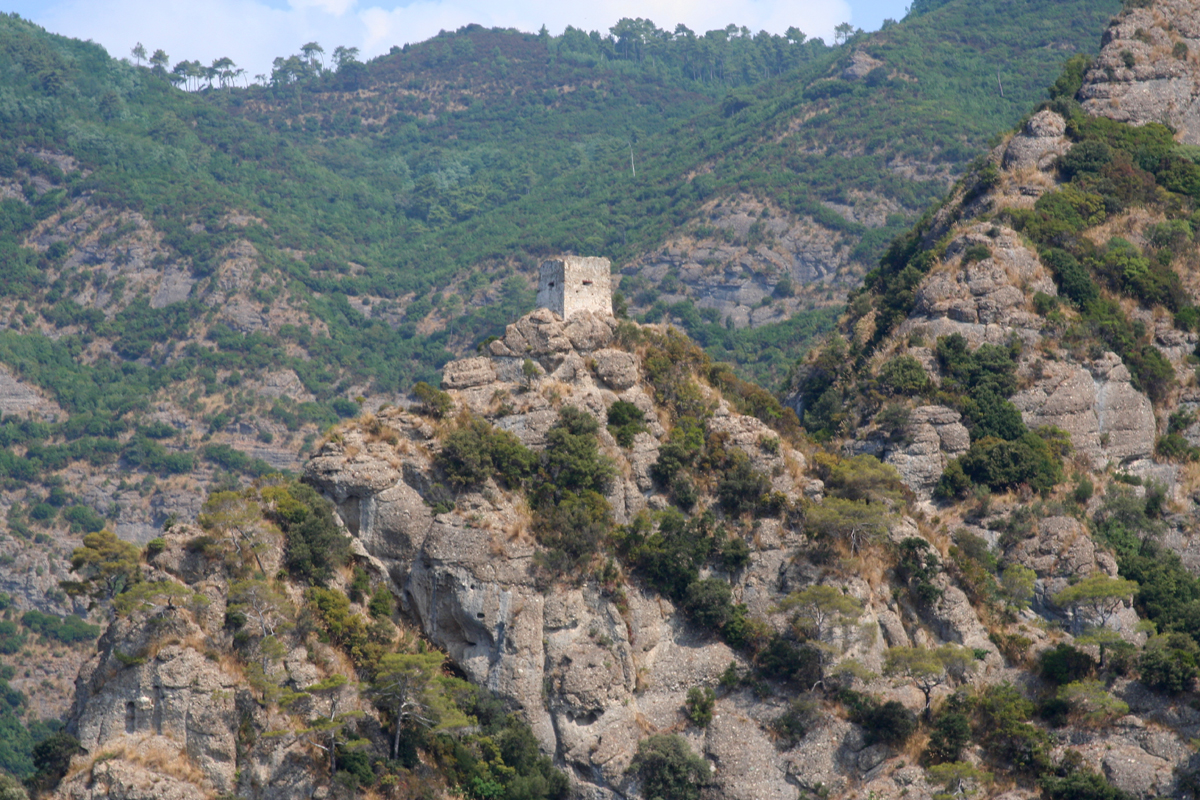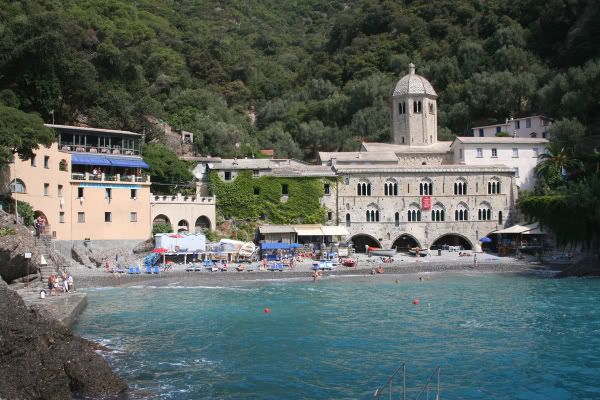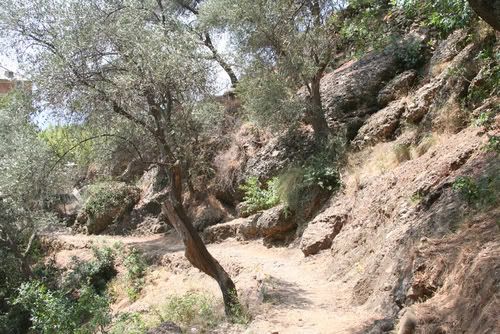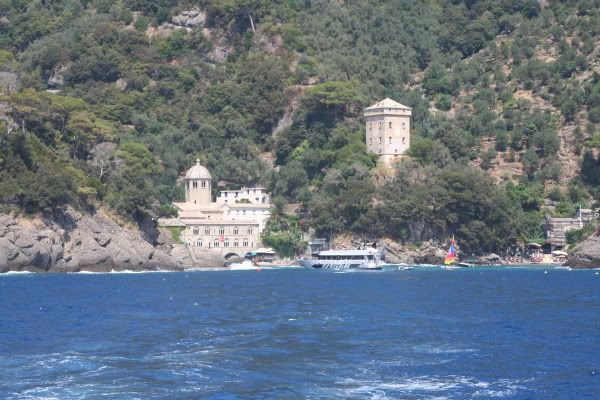We returned yesterday from five almost perfect, very relaxing days in Italy.
To begin, a word of thanks to our green five-speed manual-transmission Renault Kangoo, a fine, fine vehicle, totally French-looking, very comfortable to drive, with more room on the inside than appears from the outside. I forgot how much fun it was to have a manual transmission and shift. When I get back, I’m going to try to talk Suzie into selling the BMW (or maybe the Trailblazer) and buying something like this (too bad Renault got out of the U.S. market).
After writing this for a while, I realized that a day-by-day account just doesn’t work. So forgive the stream-of-consciousness nature of what follows.
Our first day, Monday, was mostly spent driving from Grenoble to our first destination in Italy, a resort town on the Portofino peninsula called Camogli. Random observations follow:
(1) If you do not like tunnels, don’t drive from Grenoble to the Italian Riveria. In addition to the long, long (and expensive!) Tunnel de Frejus under the Alps (about 7 miles long, the first time I’ve crossed an international border underground), there are about 30 other tunnels of lengths varying from 100 yards to several miles. The ventilation varies from quite good to can-you-survive-for-five-minutes-on-exhaust-fumes, and the lighting varies from quite good to good-luck-if-you’re-wearing-prescription-sunglasses.
(2) If you are ever driving from Turin to Camogli, take the A7 rather than the A26, because if you take the A26 you have to drive right through the center of Genoa, and the expressway is only two lanes, and in our case it went down to one lane due to some road work, leading to us being caught in a 45 minute grinding, hot, stinky, in-and-out-of-tunnels, stop-and-go traffic jam.
(3) The European freeways (autoroutes in France, autostrada in Italy) are all tollways, and very expensive, but well worth the money when you consider the time savings. They are also extremely well maintained (as are almost all French and Italian roads, rant to follow) and well-signed, with frequent modern, well-maintained, clean rest areas (most consisting of a gas station, a take-out restaurant, a convenience store, and, my particular favorite, machines that quickly dispense delicious espressos and cappiccinos (or doubles) for 1 euro. The French areas are better maintained than the Italian, but the food is better in the Italian areas.
(4) Watch for your exit. We overshot ours, and ended up in Rapallo, on the other side of the Portofino peninsula from where we wanted to be. After six hours of driving on wide-open expressways, I found myself on narrow streets, amidst pedestrians and scooters intent on disobeying all traffic rules, in an unknown town, without a map. Fortunately my innate sense of direction somehow kicked in, and I managed to get us on the main road heading across the peninsula to Camogli. We stopped halfway and got a map and further directions, and managed to find our town … but finding the hotel was a different matter. Signs pointed to it, but always the road (or at least the part of the road open to cars) petered out before we got to it. Finally we just parked and walked, and discovered that you needed a special pass in order to go on the pedestrian-only portion of the road; even then we had to squeeze into on-street parking a couple of blocks away from the hotel and then drag our bags down the street and then down a flight of stairs to the hotel, whose entrance is located on a narrow pedestrian way.
(5) After we checked into our hotel, we found ourselves in one of the most beautiful places we’ve ever been. Our hotel was right on the Mediterranian (well, not right on the water, but as close to the water as you could get). This was the view out our hotel room window (larger view here):
And the Camogli waterfront (our hotel is the smaller building near the trees):
(6) I had forgotten how easy it is to stay afloat in salt water, and how fun it was to swim in a body of water having large waves. After our long, hot drive, a swim was definitely in order, so we changed into our suits and went down to the beach in front of our hotel. The beach was a rock beach, not a sand beach, which had its advantages (no sand in your suit and shoes) and its disadvantages (the rocks hurt; all of us got a little cut and bruised). But the water was absolutely the perfect temperature, and was clear and clean and remarkably free of seaweed or other detritus. The boys became enamored of wave riding, waiting for a big wave and then trying to time it so they could body-surf into the shore. I tried it too; the problem was that if you got just a little bit too far ahead, the wave would pound you into the rocks with surprising power. Several times I got flattened, and once I managed to get a large scrape on my supposedly scratch-proof sunglasses. There must be some kind of life lesson in the fact that if you are just slightly behind the break line, you harmlessly bob up and over the wave, but if you just slightly ahead of it, you get pounded. Some of the waves were large – this picture shows Suzie at the top of one and Andrew at the bottom, so if you imagine their bodies you can get a sense of the wave size:
The second day we dedicated to swimming. We rented a couple of deck chairs at a beach place near our hotel, the advantage of which was not only not having to sit on the rocks, but also having access to a shower for use after coming out of the water. The boys and I continued our wave-riding efforts, but mostly we just hung out in our rented chairs.
(7) Italians on vacation (or at least the ones in Camogli) are on a different schedule. It seems that no one is out and about until at least 10 am, and during the hot part of the afternoon, from 2 to 5, everything pretty much closes up. Things start hopping again about 6, but many restaurants don’t open again until 7:30, and most people seem to stay out until past 11. What was interesting is how quickly we fell into this timetable, sleeping in, avoiding the hot part of the day by swimming or staying inside, and then having a late dinner and staying up late.
(8) Camogli was nice not only because of its physical beauty, but also because of the kind of people who were there. It seemed to be a mix of locals and tourists, and everything was understated. There were lots of families, lots of kids, lots of older folks, almost all Italian. The whole time there we saw just one other American family. The place was nice and easy and accessible in a very unpretentious, middle-class kind of way. The part of the town near the water consisted of a broad promenade about three-quarters of a mile long. We felt comfortable enough in the town that several times in the evening Suzie and I would give the kids enough money to buy gelato and tell them we’d meet them in an hour. They would go off on their own and Suzie and I would have time to ourselves. Very nice.
The third day, Wednesday, we took a ferry from Camogli to San Fruttuoso, a tiny fishing village that is accessible only by ferry or by foot. The trip took a half hour, rounding the north end of the Portofino peninsula. The beauty of the land, and the setting of the little town of San Fruttuoso, were extraordinary. We walked around the town, visited the church and the abbey and the tower, and then Suzie and I had drinks while the boys swam in the small harbor. Pictures tell the story better than I can with words:
About this time, we were thinking that we shouldn’t have planned on spending only three nights in Camogli. We had made reservations at a hotel near Asti, in the Piedmont region of Italy, because we wanted to see another, less touristy part of the country. We could not imagine how any place could be more beautiful, or more comfortable, or a better spot to vacation, than where we were.
As the next post will show, we were wrong….
Categories: Travel -- France

